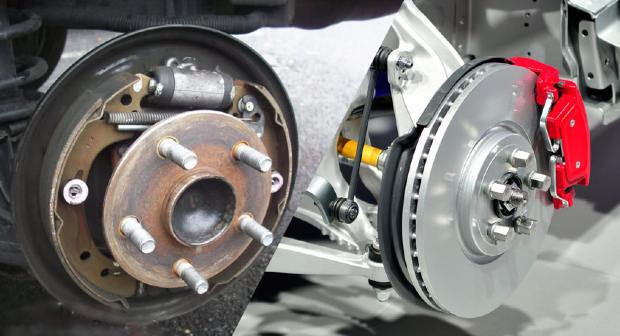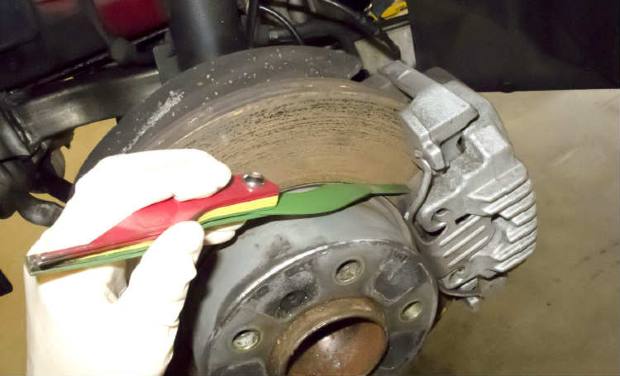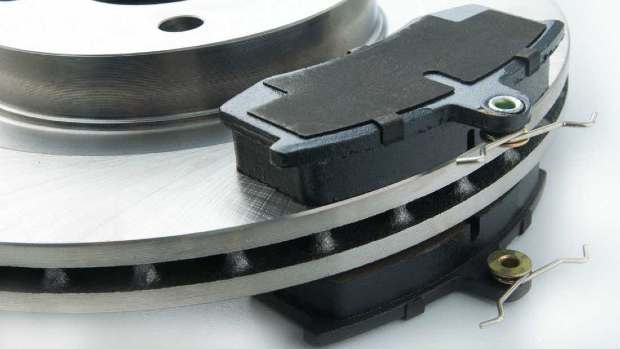The Importance of Regular Brake Inspection and Timely Replacement
Much of the technology previously found in exorbitantly priced sports cars has trickled down into your humble SUV or daily runabout. From reinforced chassis and beefed-up turbo boosters to improved aerodynamics, you’ll find something in your car to brag about. And it’s not just about speed – coming to a safe stop, or cornering with confidence is done with good, responsive brakes. And these too were first developed in the world of motorsports.
Disc brakes found their way into mass production cars soon after Jaguar won the 24-Hour LeMans with cars fitted with disc brakes back in the 1950s. Further technological improvements since then, like ABS or traction control, have made today’s cars not only faster but also much safer to drive. The line between yesteryear’s sports icons and affordable performance cars of today has blurred, especially in terms of braking. As with almost any other part, brakes need regular inspection or replacement parts at some time. Whether you’re looking for brake pads Volkswagen for your Golf R, rotors for your Range Rover, rear drums for an old Commodore, or any other vehicle for that matter, read on to find exactly what you need.

Drum vs. Disc Brakes
Though disc brakes can be seen in most new models today, older cars and some heavy-duty vehicles still rely on drum brakes for stopping power. To keep costs down, cheaper car models may have a combination of the two, with discs up front and drums at the back. Let’s take a closer look at the components in each brake type, how they work, and the materials they’re made of.
Drum Brakes
Drum brakes get their name from the drum, which houses the braking components, or brake shoes. When you press the brake pedal, braking fluid activates the brake shoes, which press along the drum attached to the wheel, bringing your car to a stop.
Drums are either made of cast iron or aluminium, and brake shoes are pieces of welded steel. This combination provides good heat conductivity and relatively long wear. Despite being the low-cost option, drum brakes provide adequate stopping power, particularly in slower utility vehicles, like trucks or heavy-duty machinery.
Disc Brakes
Disc brakes consist of rotors or discs, along which run brake calipers. Inside the calipers are brake pads, which press on the rotor when you press the brake pedal. And since the rotors are exposed, they’re cooled by outside air, so there’s less heat build-up than in enclosed drum brakes. This allows for safer, more consistent, and harder braking at higher speeds.
Most vehicles have cast iron rotors, though you’ll also find rotors made of composite materials or even ceramic in high-end sports cars. Brake pads are mostly a combination of steel and composite materials.
The gradual shift from drum to disc brakes in passenger cars has given drivers a better driving feel behind the wheel, with sharper and shorter braking times and distances. This is coupled with the convenience of lower maintenance requirements of disc brakes. With fewer parts and a simpler, yet more efficient design, disc brakes are easier and cheaper to service.

When to Check Your Brakes
Nothing lasts forever, though, and the same can be said about your car’s brakes. A variety of factors influence how your brakes perform and how long they’ll last. How and where you drive, the prevalent weather conditions, water and dirt buildup, as well as the quality of braking components. All these affect the everyday wear and tear brakes go through.
If your vehicle is under factory warranty, you’ll get brakes checked at regular service intervals. Brake shoes and pads should be inspected every 10.000km, and replaced every 50.000km. Rotors and brake drums should be able to last at least double that. Remember to always check your mileage, and periodically do a quick inspection of your brakes, especially before taking longer trips. There are telltale signs that your brakes are worn out or faulty, including:
Unusually longer braking distances
Your car pulls towards the left or the right when braking
Soft or unusually low brake pedal
Sudden screeches or noise when braking
Steer judder when applying the brake pedal
The brake warning light starts flashing
In cases like these, your best option is to pull your vehicle to a safe stop and have it towed to the nearest workshop. Major faults include leaky brake fluid lines, worn or chipped pads and brake shoes, broken brake shoe springs, damage or severe cracks to rotors and drums. Or perhaps it’s just an ECU fault signalling faulty brakes when no fault is present. Either way, getting brakes checked and serviced on time is paramount for you and your passengers’ safety, as well as the safety of other drivers or pedestrians.

Buying Replacement Brake Parts for Your Vehicle
When buying replacement braking components, there are a few things to consider. Should you get OEM parts at a higher cost, or aftermarket parts at a discount? What do different brands mean for braking performance? How long will your new parts last? Are they safe? The list goes on. Bear in mind what you need, your driving habits, and of course, your budget
Though buying OEM brake pads, rotors, calipers, drums or brake shoes is recommended by vehicle manufacturers, aftermarket brands will do the job just as well, if not better. Some may even have better wear resistance and last longer. Specialised manufacturers may also offer better braking in varying conditions, like rain or extreme temperatures.
What is important is finding the right part. For rotors, look for models matching your wheel size. When buying brake pads, consider quality materials with lower wear. Or, if you’re budget-conscious, look for bundled deals with both rotors and brake pads. When buying rear drums, bear in mind that they are sold in left and right pairs, and you should replace both your existing drums for equal brake force.
The choice of buying OEM or aftermarket is up to you. Get your parts either online, generally at a lower price, direct from your vehicle manufacturer selling genuine brands, or from your nearest store selling automotive parts. Online stores will offer quick delivery and safe payment options, while licensed service centres can provide servicing by factory-trained pros with capped service pricing for vehicles still under warranty.
Whatever your choice, replacing brake components, especially brake pads and brake shoes at the recommended intervals will give you the peace of mind that your vehicle will stop exactly when you want it to.
Safe driving!






